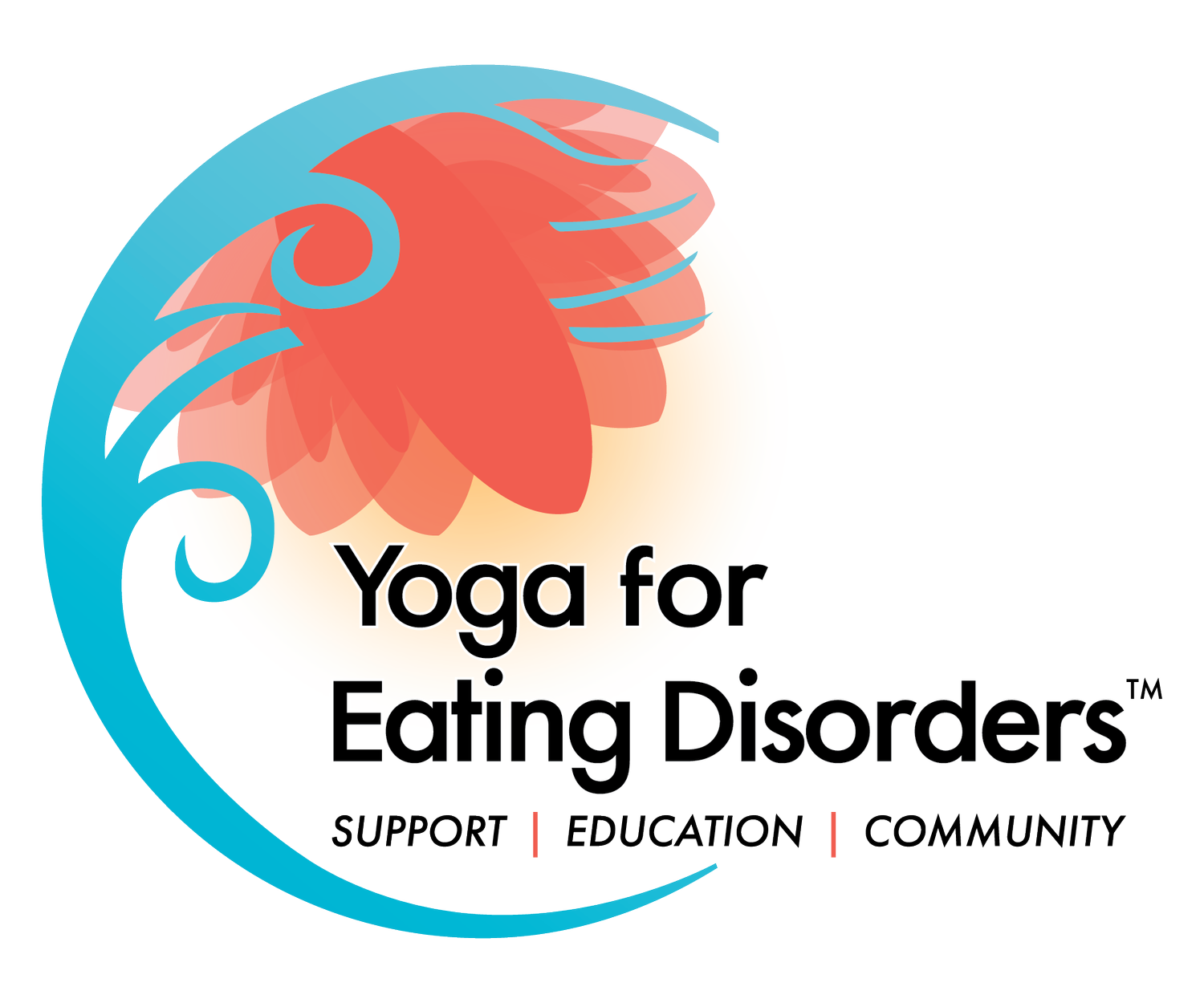How Yoga Helps Us Return to Our Bodies As We Recover From An Eating Disorder
I was 18, pulled from my sophomore year of college, and on my way to inpatient treatment for the first time. I sat in the backseat of the car, curled up in my mother’s arms, cold, weak, and desperately afraid.
I have one distinct memory from that ride to Philadelphia: driving past the old Nabisco factory, which, until it closed in 2015, had filled the entire neighborhood for decades with smell of sugar cookies. As I child, that smell and the cookies the factory produced were mouthwatering. A source of pure joy. An innocent pleasure. That day, the sweetened air was a cruel joke. I couldn't bear it. I rocked in panic, my throat closed, I moaned, cried, and buried my face as deep into my mother’s side as I possibly could.
That was the first time my sense of smell had been so intensely stimulated in a while, and it petrified me. Starvation had numbed me and compromised my senses. The fear of smells and tastes were paralyzing. My vision was blurry, and I could only hear my eating disorder voice. All other sounds were muffled in the background.
It’s only through looking back on that memory 20 years later, that I understand how anorexia literally desensitized me. As we all know, our eating disorders serve a precise function: to protect. Along the descent into eating disorder hell, protection turns into destruction, leaving us isolated in the torment. We hollow out physically, emotionally, mentally, and spiritually. Sensation is unwelcome. Feeling is not the point.
In my experience, the healing process from an eating disorder is a tumultuous effort of learning how to “sense” again–-how to sense hunger cues, emotions, our bodies, our intuition, and how we feel in relationships. It’s also a return to our literal senses, sensations, and sensory experiences. In many ways, this aspect of healing–-returning to our senses–-is what resuscitates our souls by bringing color, textures, and richness back into our lives.
How do we go from numb to sensory human beings after living in fear of feeling our bodies?
I find it to be an ongoing process that requires support, patience, and resilience. In my healing, yoga has helped me return to my senses in profound ways. For me, yoga is a safe place to learn how to feel and name sensations that happen in my body. In half pigeon pose I sense an intense stretch in my hip, in forward folds I feel discomfort in my hamstrings, and in triangle pose I notice the sensation of expansion. The more I have become comfortable identifying, naming, and sitting with physical sensations that arise in my body, the easier and more natural it becomes to name and feel emotions, even the painful ones.
The practice of naming physical sensations can be applied to other activities as well. My advice is to find an activity that you enjoy and take stock every so often of what you feel and where you feel it. Name the sensation. Become familiar with it. Observe it. This skill will become useful for naming emotions and experiencing them versus turning to symptoms to banish them.
I recognize that naming sensations in our bodies can aggravate or cause turmoil around body image. Even so, healing requires we name those feelings too. Part of regaining our senses is also knowing and defining our limits. Trust your instincts around when and how often to practice identifying sensations. Like all aspects of healing, returning to our senses is also a process.
Yoga has also helped me develop my sense of sight. Before I used to stare down food like I would an enemy. Or I'd avert my eyes, turn away from what was fearful. In yoga, we often talk about keeping the eyes soft to embody a sense of ease and calm in our poses. I’ve noticed that when my eyes are soft (meaning I am not scrunching up my forehead to fiercely concentrate), my thoughts are kinder. I judge, berate, and demand less. I am more open to the sensory experience of the pose and less concerned about controlling the outcome.
Applying soft eyes in difficult life moments has often made the difference between making a positive choice versus an unhealthy one. Soft eyes have also helped me to stand in front of the mirror and see myself from all angles with compassion.
On a final note, as I recall the Nabisco factory and the difficulty it caused me that day, I can’t help but smile when I imagine how happy the smell would make my two little girls, how much it would light them up, and how they would beg me to stop for cookies. Children have the most beautiful relationship with their senses; automatic, curious, simple, and joyful. Little ones represent the model of what’s possible for all things good. They remind me how much more fun sensational is than numb.

